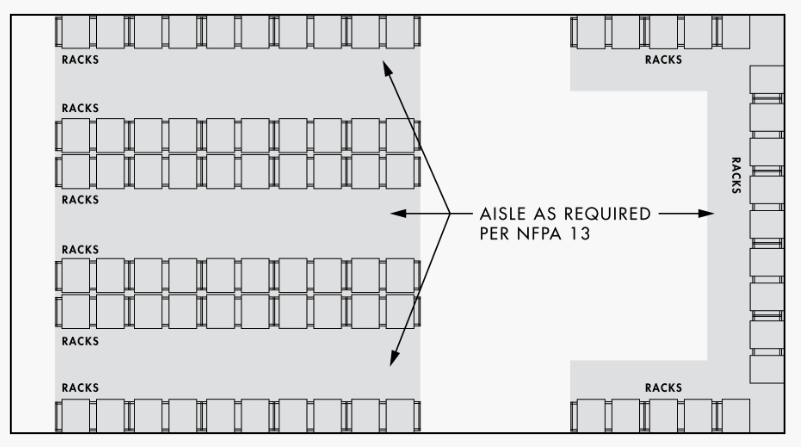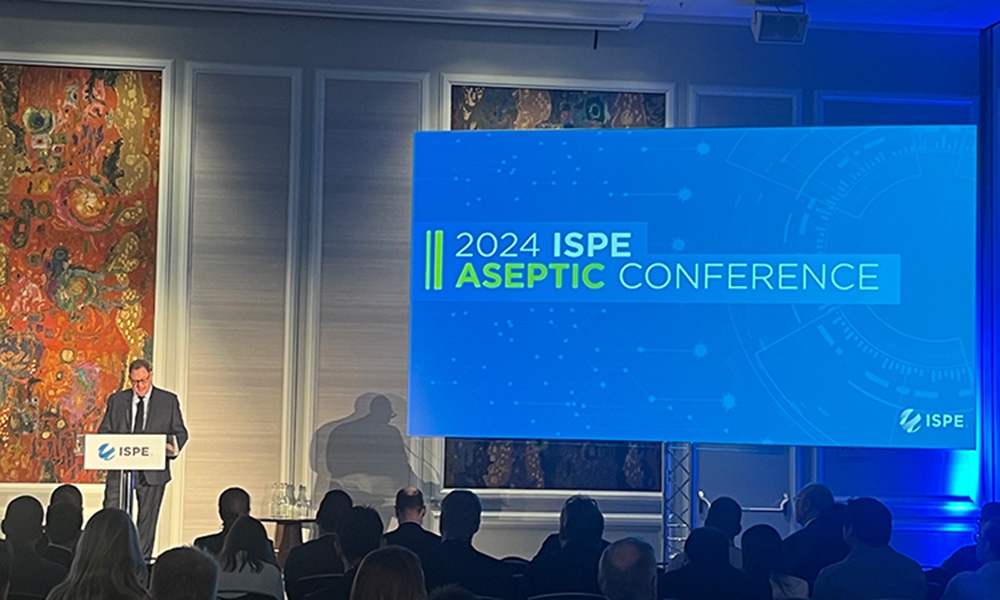Bringing Pharma GMP Storage to Compliance

On the morning of 3 April 2015, a fire was reported in a General Electric storage warehouse in Louisville, Kentucky. A large cloud of black smoke could be seen for miles. The building was a total loss, with the damage estimated at $110 million. Luckily, no one was injured. The 700,000 SF building was sprinklered, but the system could not keep up with the fire. According to an article in the NFPA Journal, the ordinary-hazard system in use was designed to control fires involving noncombustible metal parts used in the manufacturing of air conditioners, not the high concentration of plastic and rubber that were actually stored at the GE facility.1 This is just one example of what can happen when the function of a building changes, but the systems are not updated accordingly. New storage facilities are built to comply with current codes and regulations. However, in existing buildings, changes taking place slowly over a number of years can accumulate, resulting in non-compliant use. For example, code compliance should be revisited when:
- Areas are converted into storage;
- Storage is densified;
- The height of storage or type of stored material changes
Building owners and operators are required to comply with the rules for that new use, but often are not aware of the requirements and implications. For instance, the sight of sprinkler heads overhead may give them the false impression the facility is protected. Even a properly-designed sprinkler system is only one aspect requiring consideration – the fire detection system, building access, fire separation, and egress are other components that also need to be evaluated. Many factors need to be considered when evaluating the regulations set forth by The International Fire Code 2015 (IFC 2015) for a typical GMP warehouse storage facility with non-hazardous contents. These usually apply to the storage of combustible materials on pallets located within racks and on shelves exceeding 12 feet in height, and include the type and quantities of materials to be stored, storage area and storage configuration. Depending on the classification of the stored material and storage area, there are different requirements for the fire extinguishing system, fire detection, building access, and smoke removal. This is seen in IFC 2015, Table 3206.2, General Fire Protection and Life Safety Requirements (Figure 1).
Stored Material – Commodity Classification Stored material needs to be properly assigned a Commodity Class as described in IFC 2015, Section 3203. The materials are divided into Commodities Class I-IV, high-hazard commodities and plastics, which are divided into Groups A, B, and C. Only certain amounts of Group A plastics are allowed in Commodities I-IV. Larger quantities of plastics are considered high-hazard commodity class. Most of pharmaceutical storage materials fall into the Commodity III and IV classes, but this needs to be verified on a case-by-case basis. The designation of high-piled storage area may be based on a lower hazard class if an engineering analysis demonstrates that it is adequately protected by an automatic sprinkler system. High-Piled Storage Area The size of the high-piled storage area needs to be determined. It is important to note that the high-piled storage area is the actual area of storage (racks, piles, or shelves) and the required aisles, not the entire space in which high-piled storage is located (see Figure 2). This number should represent the total of all high-piled storage within the building.

Implications Based on the Commodity Class and the total amount of high-piled storage, basic requirements can be determined from Table 3206.2. The significant implication of Table 3206.2 is that once the storage area of Commodities Class I-IV exceeds 12,000 SF, more requirements such as a mandatory automatic sprinkler system, building access and smoke and heat removal apply. If either an ESFR sprinkler system or control mode special application sprinklers are used, smoke and heat removal is not required. Installation of ESFR sprinklers is typically possible in an existing building, but may require increasing the building’s water supply. On the other hand, depending on site configuration, compliant building access may not easily be achieved – this requirement calls for an access road that is a minimum of 20 feet wide and located within 150 feet of all portions of the first-story exterior walls of buildings used for high-piled storage. If a dead end extends beyond 150 feet, a turn-around for fire apparatus shall be provided, with a turning radius as determined by the fire code official. In addition, for fire personnel access, man doors are required to be located so the lineal distance between adjacent access doors does not exceed 100 feet.
In the 2015 version of the Fire Code, an exception is provided in which the 100-foot distance between access doors may be exceeded in existing buildings without a change of occupancy, with the condition that the number and distribution of doors are approved. One way to avoid these additional access requirements is to divide storage areas (using 1 hour rated fire barriers) into spaces not exceeding 12,000 SF. Openings in the separating walls also need to have a 1 hour rating. It is worth noting that storage exceeding 40 feet high for commodities Class I-IV (30 feet height for high hazard commodities) is considered extra-high-rack combustible storage, and requires approval of the fire code official as well as engineered fire protection.
This is just the tip of the proverbial iceberg. The above does not address all requirements or the requirements of hazardous materials storage. In summary, the code requirements for buildings are very complex, always evolving, and require a holistic approach. When renovating a space and changing its use, or changing the type of product stored, increasing the density or the heights of stored goods – it is best to consult with design professionals and the building’s insurer before changes are made to avoid costly mistakes. For the owners of so-called “legacy facilities,” it would be prudent to perform periodical compliance reviews and remedy any deficiencies. The remedy or prevention cost will most likely be a small percentage of the possible cost due to a large-loss fire. Doing nothing may be a big risk to take.
- “Too Little, Too Late” by Angelo Verzoni, NFPA Journal, March/April 2017
- International Fire Code 2015
- International Fire Code 2015 Commentary



